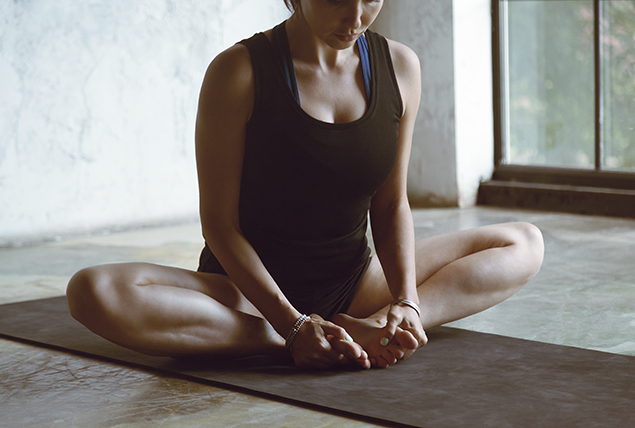Do You Need a Pelvic Floor Trainer? Here's How To Know

Key Points
- Pelvic floor muscles have a number of responsibilities, from bladder and bowel control to sexual function.
- Kegel exercises help strengthen those pelvic floor muscles.
- New technology may be able to track your pelvic floor exercises to monitor your form and progress.
You can't see your pelvic floor, so how do you know you are performing Kegel exercises correctly? Could pelvic floor trainers—bits of kit that help you visualize the muscles and provide feedback so you know you are doing them right—help improve your pelvic floor health?
Why is pelvic floor health important?
Roughly 60 percent of women have at least one symptom of poor pelvic health, such as urinary incontinence or a frequent need to urinate, suggested 2023 research by the Royal College of Obstetricians and Gynaecologists (RCOG).
The good news is that exercises can keep your pelvic floor in good shape and mitigate issues. The bad news is most women don't do them. More than half of women currently don't or have never done pelvic floor exercises, and nearly a quarter (23 percent) said they do not know how to do them, according to the same RCOG study.
Not every woman knows where to start. That's what makes these devices helpful for some people.
"The pelvic floor is a group of muscles at the bottom or base of the pelvis, forming a bowl-shaped support of the pelvic organs," said Amy Hoover, D.P.T., a Medina, Ohio-based physical therapist and the chief physical therapist for fitness platform Pvolve.
More than providing support for the bladder, bowels and sexual function, the pelvic floor is an integral part of the core. Those muscles help the abdominals, deep back muscles and the diaphragm manage pressures in the abdomen and pelvis and stabilize our center of gravity as we move, Hoover said.
Because the pelvic floor is a foundation of our body, any dysfunction there can impact our wider physical and mental health, said Heather Jeffcoat, D.P.T., the founder of Femina Physical Therapy in Los Angeles.
"If we lose these functions, it can affect your ability to exercise and maintain social and intimate relationships, with outcomes from bladder leakage to sexual dysfunction," Jeffcoat said.
Recommended
- Can High-Waisted Pants Cause Pelvic Floor Issues?: Your favorite flattering pair of jeans could contribute to a slew of health conditions.
- Do More Than Kegels for Pelvic Floor Health: Leaking urine while exercising is common, but it isn't normal. Your core plays a vital role.
- Strengthen Your Pelvic Floor to Improve Your Sex Life: Exercise is great for your health, but are you missing key pelvic muscles in your routine?
What are pelvic floor trainers?
Kegel exercises sound simple enough—repeatedly contract and relax the muscles of the pelvic floor to strengthen them—but they can be tricky to do. Pelvic floor trainers can help encourage you to do pelvic floor exercises and ensure you are performing them correctly.
There are different types of pelvic floor trainers, including the following:
- Smart pelvic floor trainers, such as those using biofeedback technology
- Weighted pelvic floor trainers, such as weighted balls
- External pelvic floor trainers, such as workouts incorporating certain strengthening exercises
"Most products and devices that are used to help train the pelvic floor work as a form of biofeedback," Hoover said. "Biofeedback is a training method to help you connect what is happening in your body to how you feel, therefore improving the mind-body connection. The goal of these devices is to make you aware of either better contraction of the muscle or better relaxation of the muscles."
These devices can be particularly useful if people are struggling to connect to this muscle group.
"The pelvic floor is deep in the pelvis, and we must rely on feeling it rather than seeing it. These devices help us to have a visual or sensation of what is going on," Hoover said. "Many people have difficulty properly isolating and contracting the pelvic floor, and trainers may help."
It might be an uncomfortable or embarrassing conversation, but it's important to talk to your doctor about pelvic floor issues and how to help.
One popular model is the Elvie pelvic floor trainer, a tiny piece of tech with force and motion sensors to measure pelvic floor contractions inside the body. It connects to an app that shows if you are exercising correctly, warns you if you aren't, and shows how strongly you are squeezing.
The app has various exercises and levels, turning Kegels into a game to help measure progress and increase motivation.
Not every woman knows where to start. That's what makes these devices helpful for some people.
"I struggled to know if I was doing them right and if they were making a difference. As I researched the area, I realized that there hasn't been much innovation at all. The one thing shown to work is giving women real-time biofeedback, but this technology existed almost exclusively in hospitals," said Tania Boler, the founder of Elvie.
Boler set about making this kind of technology available to women in everyday life after her OB-GYN recommended pelvic floor exercises and she didn't know how to begin.
Who needs a pelvic floor trainer?
"Every woman who wants to improve and maintain bladder control, sexual sensation, reduce back pain, or prepare for and recover from pregnancy can benefit from effective Kegel workouts," Boler said. "Kegels really should be a part of every woman's daily routine. While there is lots that can be done to strengthen a weak pelvic floor, prevention is the best course of action."
Pelvic floor strength won't improve overnight. It takes time and patience.
Pregnant women should consult their OB-GYN or midwife prior to using any kind of trainer and wait at least six weeks after birth before using one, Jeffcoat said. These trainers may not be a good idea for every woman.
"These types of pelvic floor trainers should be used on those with low- to normal-tone pelvic floor muscles. If you don't know, a pelvic health physical therapist can determine whether they are appropriate for you," she said.
Be aware of uptraining, or contractions of the pelvic floor muscles, that may be the opposite of what you need, according to Jeffcoat.
"There are many pelvic floor muscle conditions that need to focus on down-training, or relaxation of these muscles and the focus on contractions can worsen their condition," she said.
Pelvic floor dysfunctions that can benefit from down-training include the following conditions:
- Vaginismus
- Vestibulodynia
- Painful sex
- Painful bladder syndrome
- Urinary urgency
- Frequent pelvic pain
"Most of these devices are fairly user-friendly and come with good instructions, but always ask a healthcare professional before using anything that is inserted vaginally or rectally if you are unsure or uneasy about proper use," Hoover said.
The bottom line
It might be an uncomfortable or embarrassing conversation, but it's important to talk to your doctor about pelvic floor issues and how to help. Watch out for anything that sounds too good to be true.
"I will caution that any device that claims to strengthen your pelvic floor without you actively participating is not going to work in the long term," Hoover said.


















